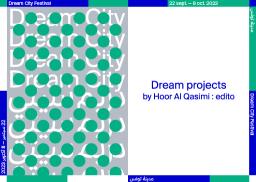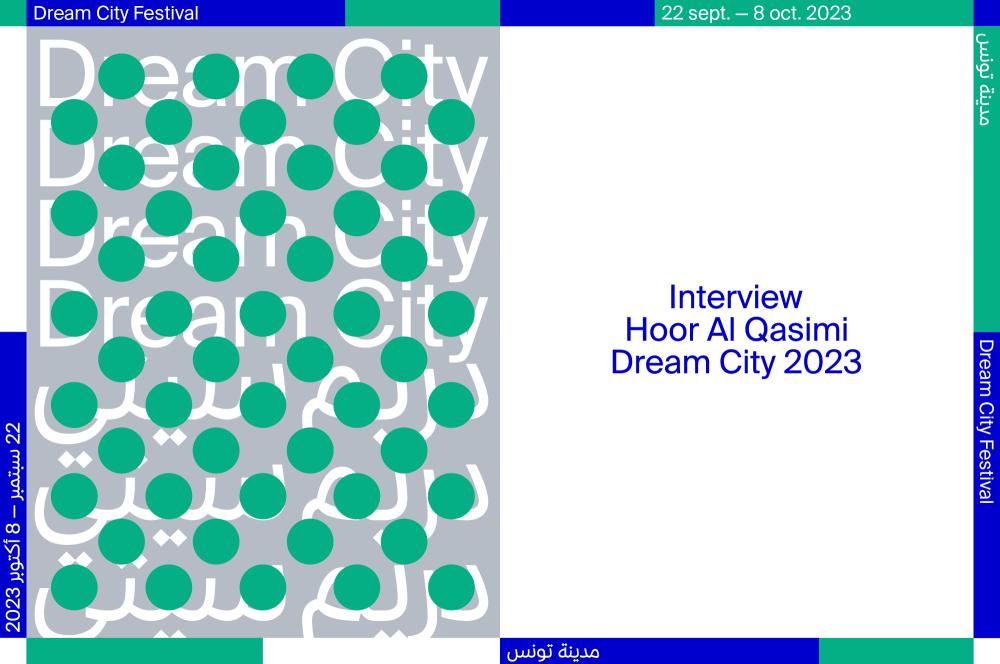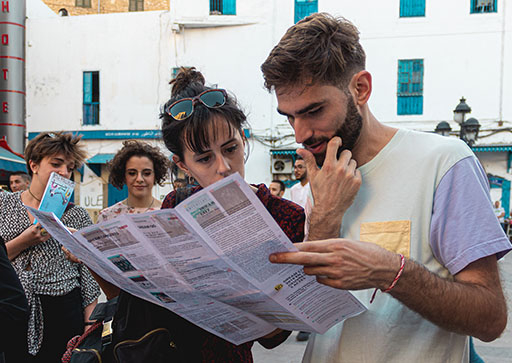Discover our artistic director Hoor Al Qasimi
" My name is Hoor Al Qasimi. I am the director of the Sharjah Art Foundation. I was initially invited by Selma and Sofiane and Jan to bring to Dream City, some of the projects that we produced for the Sharjah Biennial 15, which opened in February this year. But of course, for me, working on a biennial is very site-specific, so I really wanted to spend time in Tunis and to bring things into certain spaces and bring certain spaces to life. I visited the last edition of Dream City to see how things work, how the team works, trying to get to know people, and how they interact in the city, and I fell in love with some of the spaces that were used. For example, where we are now, Qishlat Al Attarine, was a really special place. And I felt that there could be so much that could come out of bringing this place to life. So this is one of our main venues for Dream Projects. And you'll see the others as you visit. As I mentioned, space is very important for me. Therefore, I really wanted to turn this space into a gathering space and have a lot of the works that are on video presented here within this space, while cleaning up the library and bringing it back to life.
It is beautiful to see all the hard work that went into cleaning the space. I'm hoping it remains after the festival, for sure. There's so much history in Tunis. It's important to bring that out through the project. I invited Khalil Rabah because when I visited the site of Sidi Boukhrisane, I saw these beautiful olive trees and it really reminded me of his projects around the Museum of Palestine and the olive trees. So again, I wanted to bring the space to life and give it the chance to breathe. The history of Tunis and dates made me think of Michael Rakowitz’ history, talking about his family and his grandfather's dates, a shop in Iraq. So it was really important for me to bring these projects into Tunis, so not far from the Sharjah biennial theme of thinking historically in the present, but very site-specific, while looking at Tunis' history.
When I was here last time, I had a great studio visits with Sonia Kallel and Ferielle, and I really wanted to include tunisian artists that I had met, so that was really important for me. And they're taking over spaces in Qishlat Al Attarine. It was also really important for me to show artworks that are not only about visual arts, but include films and documentaries. Manthia Diawara, his films on Angela Davis, and on Edouard Glissant. Since we're in a library, we also have their books present, so people can learn about these great figures or also interact with their work. Another artist I invited is Tarek Atoui, who will be working on a performance as well and will also include some film screenings. I think when I visited Qishlat Al Attarine, it was really special, however, a lot of the rooms were closed because they were dedicated to storage. So I was really determined to just bring all of this to life. All these books that you see around you were on the floor, rooms were locked up and just stored. So it's been really interesting to see it come to life. It's been very hot in the summer, and the team worked so hard to bring this place to life, and I couldn't be happier with it.
I think when I work on curatorial projects, I like to include performances as well. It could be an experimental performance, or it could be dance. I really try not to limit the medium. I've also worked with musicians. I think the beauty of working in the arts is you can be flexible. You can work with filmmakers, you can work with writers, poets, and I like this flexibility in the practice.
For me, working in Tunis has been a great experience. This is why I really wanted to do something site-specific and not just import certain projects to just show them within the festival. I think everywhere that you work, you really have to take into account the people, the place, the history, and I feel like there's so much history here in Tunis that people really want to see. I just wish Dream City would be on for a little bit longer so people have the time. I hope that the young generation will take away a lot of content from this exhibition and that it could be something that makes them think about going forward in terms of you know their practice in different ways. I hope that they'll spend time here just being together looking through the books and being part of this history of Qishlat Al Attarine."









